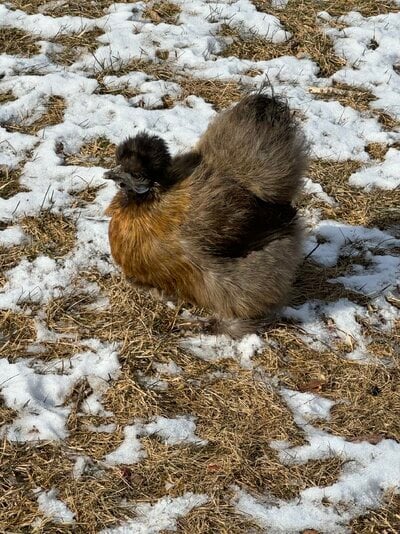Silikiemamma23
In the Brooder
- Jun 8, 2022
- 43
- 16
- 47
5 weeks all same chickif you have silkie chicks that need to be sexed place pics here. chicks need to be at least 4 weeks old. pics need to be from the sides of the head and full body, front veiw of the head, and any other pics you want to provide please. here are some tips i found online about sexing silkie chicks as well
Look at the feathers on the chick's head. Males tend to have feathers that stand upright and curve towards the back, while the female head feathers tend to form in a rounded feather puff.
Look at the comb when it develops within two to three weeks of the chick's birth. a male will have a larger comb than a female.
Males are significantly larger than females, and this can be obvious a few days after hatching. This isn't considered a certain method of sexing though because you may just have a large female or a small male. It's also a poor method if you are trying to compare chicks from two different genetic lines.
Listen for crowing. The chicks will start losing the fluffly baby feathers around four of five months. At that time a male silkie will start attempting to crow.
Look at the saddle feathers just before the tail and the hackle feathers on the neck. These feathers will be long and sharp on a male and gently rounded on a female.











